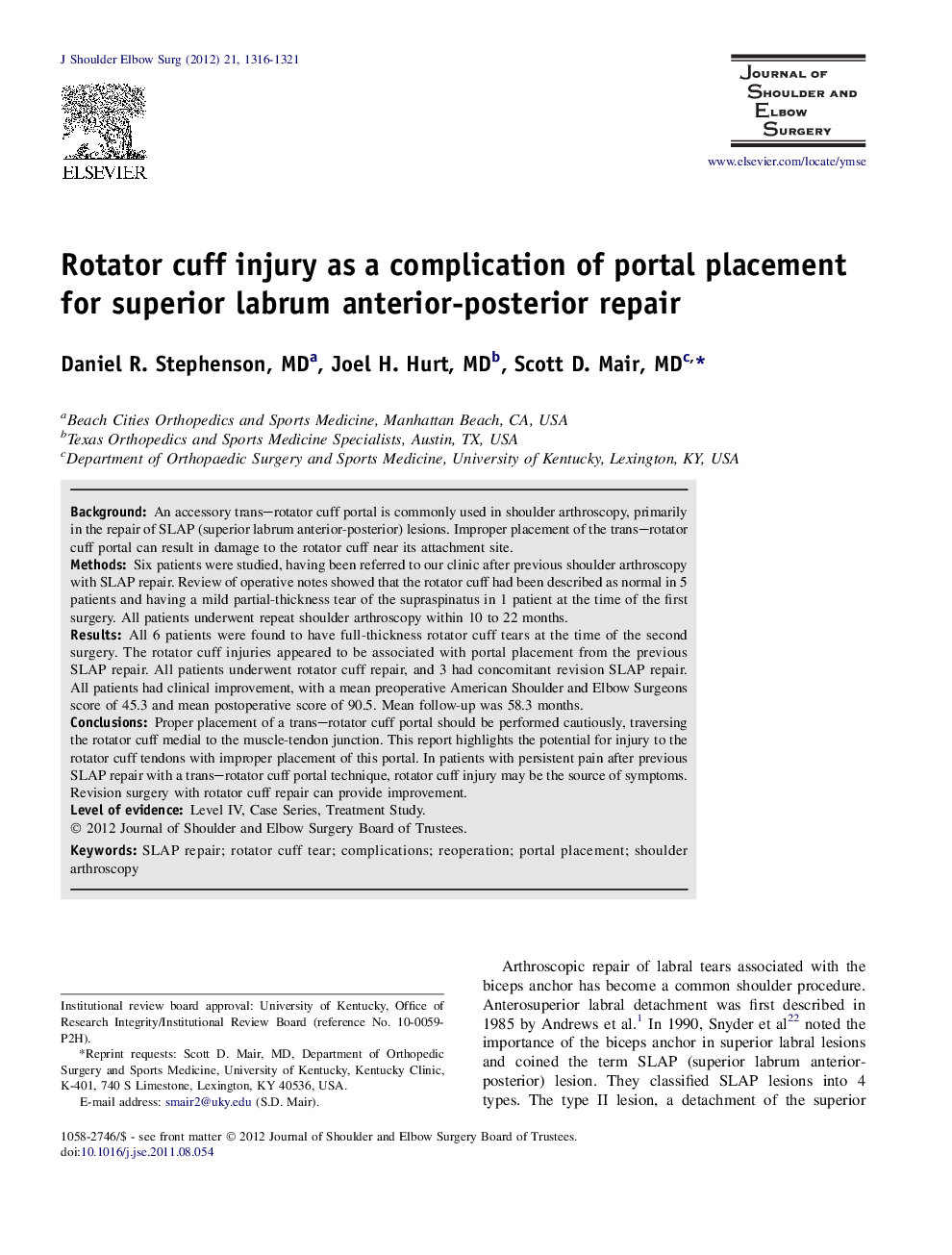| Article ID | Journal | Published Year | Pages | File Type |
|---|---|---|---|---|
| 4074176 | Journal of Shoulder and Elbow Surgery | 2012 | 6 Pages |
BackgroundAn accessory trans–rotator cuff portal is commonly used in shoulder arthroscopy, primarily in the repair of SLAP (superior labrum anterior-posterior) lesions. Improper placement of the trans–rotator cuff portal can result in damage to the rotator cuff near its attachment site.MethodsSix patients were studied, having been referred to our clinic after previous shoulder arthroscopy with SLAP repair. Review of operative notes showed that the rotator cuff had been described as normal in 5 patients and having a mild partial-thickness tear of the supraspinatus in 1 patient at the time of the first surgery. All patients underwent repeat shoulder arthroscopy within 10 to 22 months.ResultsAll 6 patients were found to have full-thickness rotator cuff tears at the time of the second surgery. The rotator cuff injuries appeared to be associated with portal placement from the previous SLAP repair. All patients underwent rotator cuff repair, and 3 had concomitant revision SLAP repair. All patients had clinical improvement, with a mean preoperative American Shoulder and Elbow Surgeons score of 45.3 and mean postoperative score of 90.5. Mean follow-up was 58.3 months.ConclusionsProper placement of a trans–rotator cuff portal should be performed cautiously, traversing the rotator cuff medial to the muscle-tendon junction. This report highlights the potential for injury to the rotator cuff tendons with improper placement of this portal. In patients with persistent pain after previous SLAP repair with a trans–rotator cuff portal technique, rotator cuff injury may be the source of symptoms. Revision surgery with rotator cuff repair can provide improvement.
